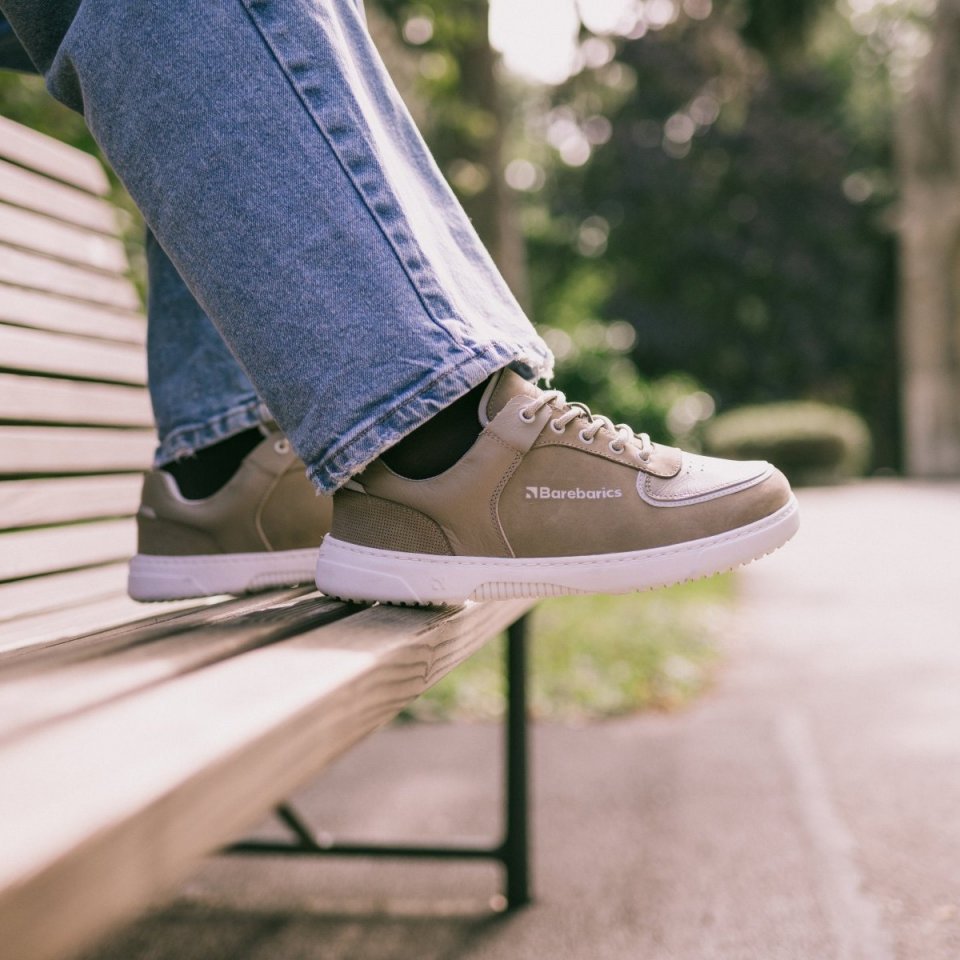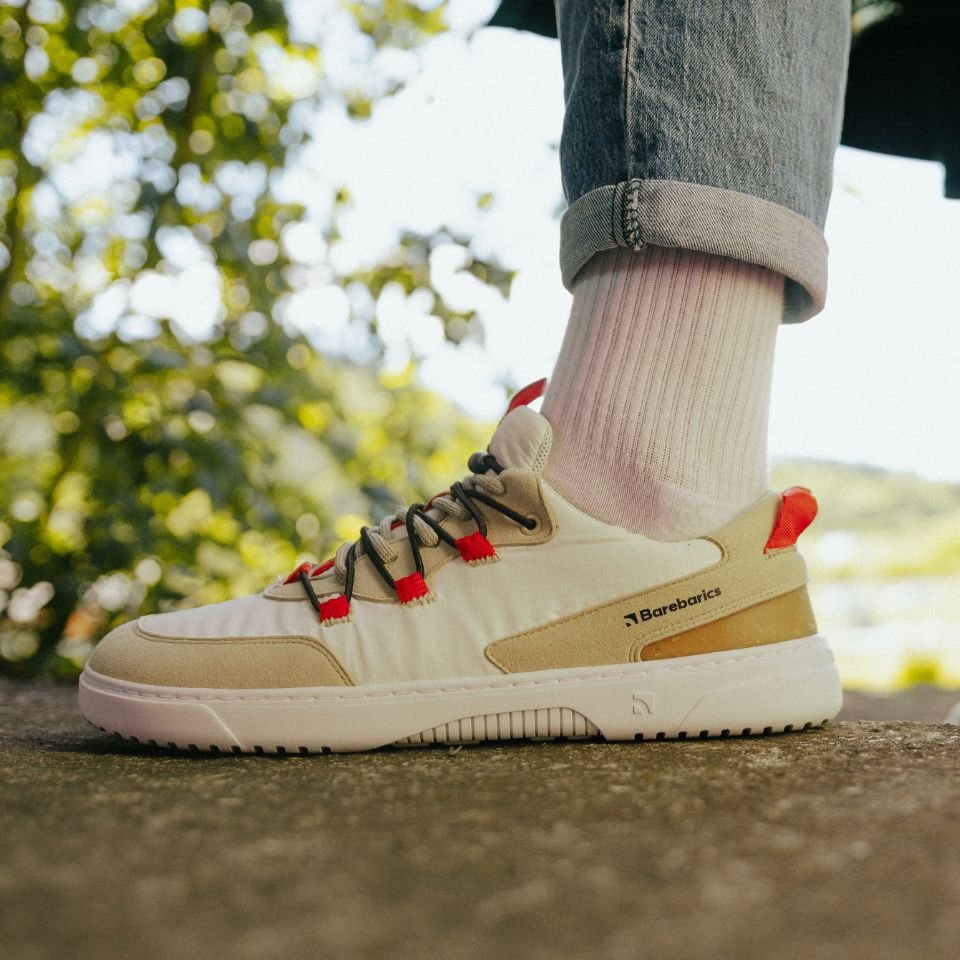History of Skate Shoes
Skate shoes have evolved significantly over time. In the early days, they were simple and functional. Skaters often sought shoes with flat soles for a better grip on their boards. Durability was also a big concern, as skateboarding can be tough on footwear. The early designs were not designed specifically for skateboarding. But they laid the groundwork for specialized skate shoes to come.
Early Designs and Their Impact
The first skate shoes were adaptations of existing athletic shoes. They were typically basketball or tennis shoes. These had the flat soles that skaters needed. The grip and stability they provided were essential for early skateboarders. Companies like Vans started to take notice in the 1960s. They created shoes designed for the skateboarding lifestyle. The sticky rubber outsole Vans introduced became a staple. It was for grip and board feel that is still important in barefoot skate shoes today. Early designs impacted the sport immensely. They helped to shape the culture and fashion of skateboarding that we recognize now. As time went on, manufacturers began to design shoes specifically for skateboarding. That brought us to the diverse and specialized options available today, including barefoot skate shoes which focus on natural movement and foot mechanics.
Introduction to Barefoot Skate Shoes
Barefoot skate shoes are a modern twist on traditional skate footwear. They aim to mimic the experience of skateboarding without shoes, hence the term ‘barefoot.’ These shoes prioritize a close to the ground feel and natural foot movement. This design approach offers skateboarders a different way to engage with their board and the environment.
Concept and Philosophy Behind Barefoot Designs
The concept of barefoot skate shoes draws inspiration from the natural mechanics of the foot. The philosophy is simple: fewer barriers between the feet and the ground enhance sensory feedback. This allows skaters to better feel their board and make precise movements. Barefoot designs encourage a more anatomically aligned posture. This helps achieve balance and agility while skateboarding. These shoes serve not just as protective gear but also as a tool to promote a more intuitive skating experience.
Key Features of Barefoot Skate Shoes
Barefoot skate shoes bring several key features that set them apart from traditional skate shoes design.
Flexibility and Sole Composition
Barefoot skate shoes are known for their unmatched flexibility. This flexibility allows the feet to move more naturally, as they would if someone were skateboarding without any shoes. The sole composition is also unique in these shoes. They use thinner soles compared to traditional skate shoes. This design helps to maintain the connection between the skater’s feet and their board. It enhances the sensation of contact with the surface as well as the board. A good barefoot skate shoe offers enough protection but still allows skaters to feel every nuance of their skateboard.
Weight and Material Considerations
Another distinct characteristic of barefoot skate shoes is their lightweight. Manufacturers use advanced materials to keep the weight down. This is because heavy shoes can interfere with the barefoot feel and freedom of movement. The materials selected also contribute to the shoe’s breathability and comfort. They provide a balance of protection and touch sensitivity. It’s not just about reducing weight. It’s about optimizing the skating experience by finding the right combination of materials. These materials reflect the philosophy of barefoot skateboarding. The shoes promote a seamless skateboarding experience, connecting skater, shoe, and board with every move.
Benefits of Using Barefoot Skate Shoes
The transition to barefoot skate shoes isn’t just about style. It brings concrete advantages to the skating experience. Skaters choose these innovative shoes for their unique benefits that enhance skateboarding.
Improved Board Feel and Control
One standout benefit of wearing barefoot skate shoes is the improved board feel. The reduced barrier between the foot and skateboard means skaters can detect every shift and turn. This heightened sense improves reactions and control, making technical tricks easier. The thin soles offer direct contact with the board, enhancing maneuverability and precision.
Health and Posture Advantages
Another significant benefit is the positive impact on health and posture. Barefoot skate shoes support a more natural foot position. They align with the body’s bio-mechanics, unlike traditional skate shoes. This design can reduce the strain on the feet and legs. It promotes a healthier skating posture. Over time, skaters might notice an improvement in balance and reduced discomfort during and after skateboarding, thanks to the design philosophy that emphasizes natural foot motion and alignment.
Popular Brands and Models
As the concept of barefoot skate shoes gains traction, various brands have emerged, each offering unique designs and features. These brands have worked to refine the barefoot experience for skaters, focusing on comfort, durability, and performance. Whether you’re a casual skater or a pro, there’s likely a barefoot skate shoe that fits your needs.
Innovators in the Barefoot Skate Shoe Market
Leading the charge in the market are innovators who have taken the barefoot philosophy to heart. They have developed models that not only meet the criteria for a barefoot feel but also address the needs of skateboarders. Designers are constantly exploring new materials and designs to enhance the sensory connection between the skater and the skateboard. These pioneering companies are setting the standard for what barefoot skate shoes can offer. Every new model brings us closer to the ultimate goal of seamless skating harmony.
Comparing Traditional Skate Shoes and Barefoot Skate Shoes
When comparing traditional skate shoes to barefoot skate shoes, several key differences emerge. Each type has distinct features influencing performance and user experiences. Traditional skate shoes typically have thicker soles, providing cushioning and support. This might suit skaters who prefer a buffer from the board and terrain. However, these shoes can restrict the natural foot movement and lessen the board feel.
In contrast, barefoot skate shoes offer a more grounded experience. The thin, flexible soles of these shoes enhance sensory feedback. This allows skaters to feel the texture of their skateboard and the nuances of their moves. Although they may take time to adjust to, the benefits in board control are noticeable. Barefoot skate shoes encourage skaters to rely on natural foot mechanics. This can lead to more precise and fluid skateboarding.
Performance and User Experiences
Skaters often report a difference in performance when switching to barefoot skate shoes. The direct contact with the board can improve technical skills like flipping and turning. The lightweight nature of the shoes also contributes to a sense of freedom and agility. These are crucial for executing tricks and maintaining control.
User experiences can vary based on personal preference and skating style. Some skaters may find the transition challenging at first. The lack of padding and support is a major shift from what they’re used to. But others embrace barefoot skate shoes for the enhanced skating experience they provide. Over time, many users appreciate the health and posture benefits. They notice less strain on their feet and a more aligned skating stance.
Ultimately, whether to choose traditional or skate shoes comes down to what feels best for the individual skater. Each choice offers a different path to enjoying the sport. It’s clear that barefoot designs have carved out a significant niche in the skateboarding world. They’re reshaping how skaters interact with their boards and the environment.
Tips for Transitioning to Barefoot Skate Shoes
For skaters looking to switch to barefoot skate shoes, the transition can be unique. Here are tips to ease into this different style of skating smoothly.
Adjusting to a Different Style of Skating
When adopting barefoot skate shoes, you’ll notice a new skating feel. Here’s how to adjust:
- Start Slowly: Begin by wearing your shoes during casual skating. Get used to the feel.
- Strengthen Your Feet: Perform exercises to build foot strength. Strong feet adapt better.
- Skate Regularly: The more you skate in them, the quicker you’ll adjust.
- Be Patient: It takes time for your feet to develop the sensitivity barefoot shoes offer.
- Practice Balancing: Focus on balance training. Barefoot shoes rely on your natural stability.
- Protect Your Feet: Initially, skate in safe, smooth areas to prevent foot injuries.
Switching to barefoot skate shoes is a personal journey. Trust your feel and take your time to embrace the change.
The Future of Skate Shoe Design
As skateboarding evolves, so does the design of skate shoes. Technological advances and an increased emphasis on sustainability are likely to shape the future of footwear in this industry.
Sustainability and Technological Enhancements
The skate shoe industry recognizes the importance of reducing environmental impact. Future designs are expected to integrate sustainable materials. Brands are exploring options like recycled rubber soles and organic cotton. Eco-friendly materials will increasingly replace traditional ones.
Technological enhancements are also driving innovation in skate shoes. We will see more advanced materials that provide strength without adding weight. The development of new cushioning technologies could offer support while maintaining the barefoot feel.
Expect to see companies experimenting with smart technologies as well. These could include embedded sensors to track performance or apps that analyze skating technique. Despite these advances, maintaining the unique benefits of barefoot skate shoes, like improved board feel and foot health, remains vital.
Moving forward, the key will be balancing tradition and innovation. The goal is to create skate shoes that enhance the skating experience without compromising the planet or the purity of skateboarding. Barefoot skate shoes will likely continue to be a part of this future, offering skaters the heightened control and natural foot movement they value.



